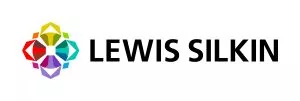- within Cannabis & Hemp, Law Practice Management and Privacy topic(s)
Employment contracts have a reputation problem. Long and legalistic, they can seem to exist only to bamboozle employees. But is this what modern employers want? If you think not, then a visual employment contract could be a solution.
It's a modern-day problem. You invest care and resources in recruiting the best people. You promote your company's brand and ethos and convince job applicants that you're a great employer. You hire someone new; everyone is excited and - then what? You send them a dry, boring employment contract that doesn't reflect the exciting opportunity ahead or welcome the employee to your business. The employee struggles to make sense of it, often doesn't read it, signs it anyway and is left feeling slightly less warm and fuzzy about your company...
Employment contracts have got longer and longer over the years, often riddled with jargon and legalese. Even if well drafted, employees may struggle to truly understand them. They tend to be more focused on what could go wrong, rather than setting out the benefits of the job or what's expected of employees. They sometimes misdescribe how key processes or benefits work at your company (because, let's be honest, you're not sure whether the right managers have fully read or understood them either).
Many modern employers are unhappy with this scenario. They'd prefer an employment contract that reflects their values, is more welcoming and balanced and clearly communicates their expectations and key terms in simpler language. They may also want it to reflect their visual style and brand.
We've started working with clients to develop visual employment contracts which better capture a company's culture. Along the way, we've learned some lessons and, in this article, we share five of them.
1. Lose the length
To create a contract which is truly visual, the word count has to drop. A lot. Even the most basic employment contract is pretty lengthy and adding visuals will make it much, much longer. If you want a more attractive, visual contract, some of the words will have to go.
As well as visuals, this creates space for – well – space. More white space makes contracts much easier to read and understand.
Deciding what to delete is partly about accepting some risk (see below) but also about re-wording, simplifying and moving things out of the contract that are better placed in policy or process documents.
2. Accept some risk
A shorter agreement means you cannot provide for every eventuality. You'll need to give careful thought to the most significant issues you want to cover and be selective.
This is all part of a broader mindset shift - from a defensive contract with maximum protection to a more trust-based and equitable arrangement with your employees which addresses the key risks.
This is where an experienced legal team will be needed – working collaboratively with your people to create something bespoke, pragmatic and robust while helping you decide what can be left out.
3. Redesign the flow and layout
Summary sheets with key terms make the contract easier to understand. And they allow you to group all the variable terms together, meaning that the rest of the contract will not need tailoring for each new recruit. This means you can more easily apply creative design elements and pave the way to automating the contracts.
The format we hit upon involves a summary, followed by sections that align with the employee journey from beginning to end. This makes more sense to an employee than a jumble of random clauses, organised for the convenience of lawyers not the employee.
Practical headings are also useful, as a way of making the contract more engaging and also more skimmable. There are lots of approaches and formatting options here.
4. Graphics are not gimmicks
You can use colour and font to bring your visual branding into your template contracts and help with navigation, for example by colour coding sections of the contract. But you could also go further with other creative design elements, if you want to create something really different.
Some employers have opted for a cartoon contract. We've toyed with this. It will mean coming up with characters or avatars representing the employer and employee and – be warned - this is tricky. For one thing, you need to make sure your employee avatar is not alienating half your workforce because it does not represent their ethnicity or gender and so on. A cartoon might be useful if a lot of your workforce does not speak English as their first language, but otherwise it might inhibit understanding rather than help it.
What about introducing pictures and icons? These can be distracting and confusing if they're simply illustrating something for the sake of it. Does putting a deckchair icon next to the holiday clause really add anything? We think not. Use images that get across your brand where you can. And use infographics such as tables and flowcharts only when they actually help employees understand complex ideas.
5. Take the time to get it right
In our experience, creating a visual contract is a highly collaborative exercise, involving lawyers, people teams and designers working together to create something which reflects your brand. You'll need to make time to involve your key stakeholders and contributors to make sure the project succeeds, any risk is understood and that you get the practicalities right.
Final thoughts
Visual employment contracts offer an opportunity for a different kind of relationship with employees. How do you want your organisation to come across to your new recruits?
The content of this article is intended to provide a general guide to the subject matter. Specialist advice should be sought about your specific circumstances.




